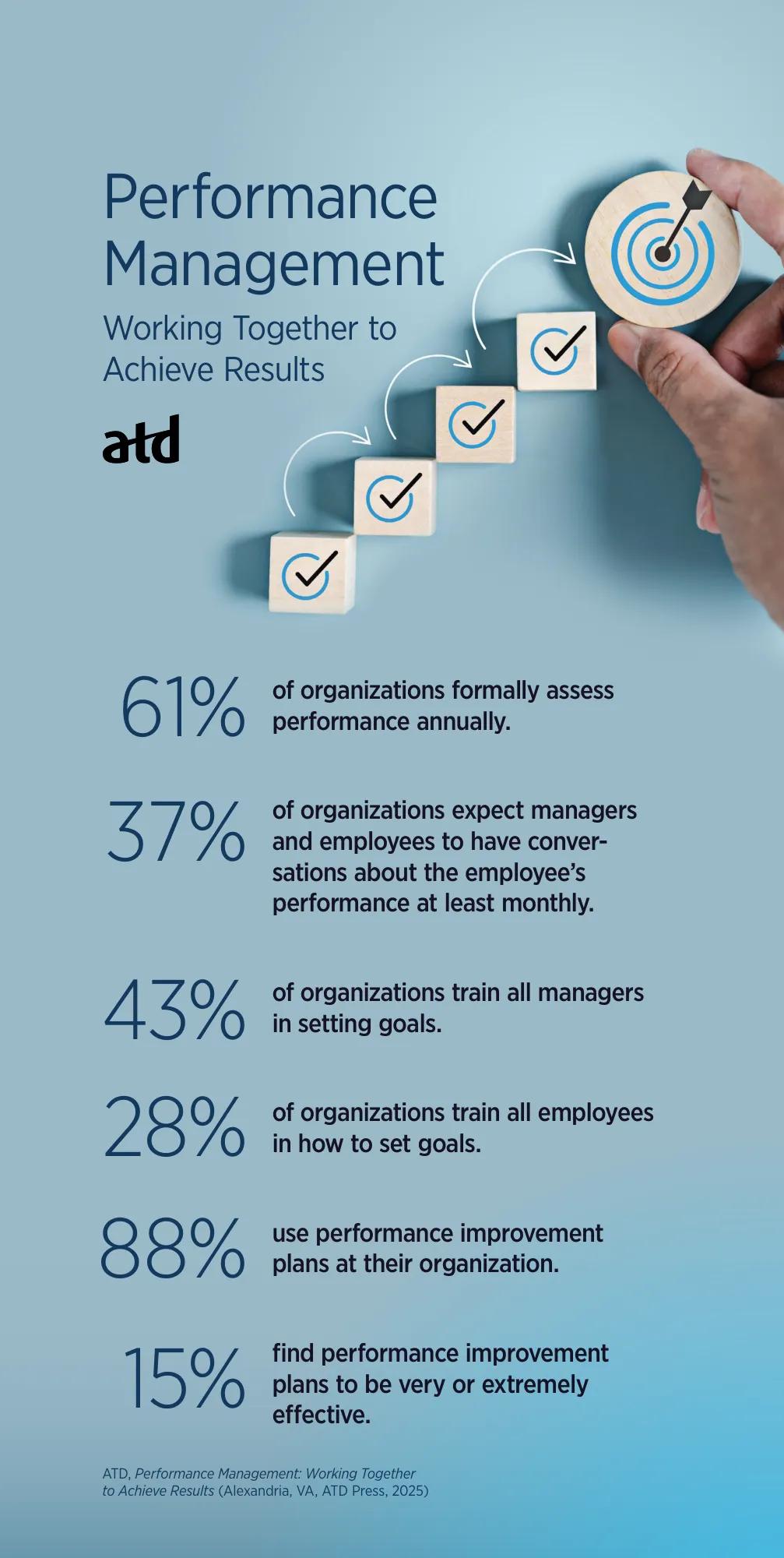ATD Blog
Role of Goal Setting in Performance Management
ATD Research examines nuts and bolts of performance management.
Wed May 21 2025

Performance management, as defined by the TDBoK™ Guide, is the ongoing communication process between supervisors and employees to establish expectations that support accomplishing the organization’s strategic objectives, including clarifying expectations, setting objectives, providing feedback and coaching, and reviewing results. Performance evaluation and management can be meaningful and empowering tools when executed well. They can drive engagement and help identify and retain high-potential employees. However, there is room for growth in performance management effectiveness. In fact, according to a recent article by Gallup, only 2 percent of CHROs think that their organization’s performance management program inspires employees to improve.
In February 2025, ATD Research published Performance Management: Working Together to Achieve Results. The study surveyed 201 talent development professionals to understand their organizations’ performance management processes. One area for performance management improvement identified in the report is in setting goals. The study found that only 34 percent of respondents say their organization’s performance management process is very or extremely effective at developing goals.
In order to be productive and perform at their best, employees need to know what is expected of them, by having clearly defined responsibilities and goals against which they are measured. The organization cannot meet its goals without the employees meeting theirs. At 90 percent of organizations, employees are expected to be involved in setting their own goals, with half expecting employees to have a lot of input into the process. However, only 28 percent train all employees on how to set goals.
To improve the effectiveness of goal setting, M. Tamra Chandler, founder and CEO of PeopleWyze, advocates for a team-oriented approach. “Most of us work in teams and are closely connected to our team’s work,” she explains in her interview for this report. “When people clearly understand their team’s objectives and their role in achieving them, they become more motivated to contribute and engage.”
Chandler also recommends reframing goals as commitments or priorities. “Using different terminology can help us think more flexibly and embrace a more agile approach,” she says.
When it comes to goal setting, here are some additional things to remember:
Define goal-setting strategy and alignment at the executive level.
Ensure all managers and employees understand organizational goals and objectives.
Ensure managers understand how department or team goals align with the organization’s goals.
Create a plan for updating or deleting goals based on shifts in the business.
To learn more about organizations’ performance management practices, check out Performance Management: Working Together to Achieve Results.

